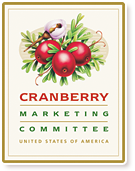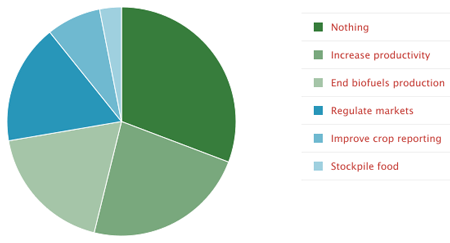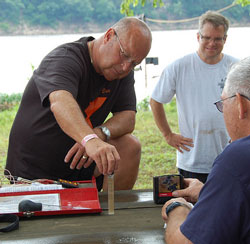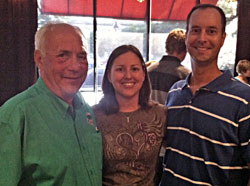 We were shocked to hear this week of the passing of National Agri-Marketing Association friend Denny Eilers, the Iowa Photo Farm photographer. The news came from the NAMA e-Newsletter:
We were shocked to hear this week of the passing of National Agri-Marketing Association friend Denny Eilers, the Iowa Photo Farm photographer. The news came from the NAMA e-Newsletter:
A Cornbelt NAMA member since 1990, Denny has been the photographer for many NAMA Agri-Marketing Conferences and will be greatly missed.
The Iowa Photo Farm was operated by Denny and Gwen Eilers. Denny served as chief photographer and Gwen was the business and production manager. They were located on a working farm in scenic northeast Iowa, raising corn, soybeans and a variety of locally grown vegetable crops.
Denny died Sunday, June 26, 2011, at Central Community Hospital, Elkader.
Services for Denny will be at 10:00 a.m. Friday, July 1, at St. Patrick Catholic Church, Monona, IA. Arrangements are being handled by Leonard Funeral Home of Dubuque.
If you do a search for Denny here on AgWired, you will find lots of his photos from the NAMA conventions. We had a great working relationship with him at those events and Chuck took the photo here of Denny at the 2011 NAMA. We will definitely miss him.
Grant him eternal rest, O Lord, and let perpetual light shine upon him.




 In a strong statement at the start of the hearing, ranking member Senator Pat Roberts (R-KS) said that GIPSA proposal is in direct opposition to the intent of Congress under the 2008 Farm Bill.
In a strong statement at the start of the hearing, ranking member Senator Pat Roberts (R-KS) said that GIPSA proposal is in direct opposition to the intent of Congress under the 2008 Farm Bill.


 Whoever says that ethanol hurts marine engines has never seen boats running at more than 80 miles an hour on E-10.
Whoever says that ethanol hurts marine engines has never seen boats running at more than 80 miles an hour on E-10. All of the boats that race in NBRA competitions around the country this year have to prove they are using 10 percent ethanol fuel in order to be eligible for additional prize money in the race. “We test all the fuel before the race and then the top three entries in any class are tested when they come in to make sure they are running ethanol,” said NBRA president Dan Crummett – yes, the same Dan Crummett who might be better known to the Agwired audience as Executive Editor for Farm Progress Companies.
All of the boats that race in NBRA competitions around the country this year have to prove they are using 10 percent ethanol fuel in order to be eligible for additional prize money in the race. “We test all the fuel before the race and then the top three entries in any class are tested when they come in to make sure they are running ethanol,” said NBRA president Dan Crummett – yes, the same Dan Crummett who might be better known to the Agwired audience as Executive Editor for Farm Progress Companies. Would you be surprised to know that many food bloggers aren’t real familiar with where the food they write about comes from? Probably not. Most people today do not understand how food is produced and have no real connection to the farm regardless of what kind of food or farm you’re talking about.
Would you be surprised to know that many food bloggers aren’t real familiar with where the food they write about comes from? Probably not. Most people today do not understand how food is produced and have no real connection to the farm regardless of what kind of food or farm you’re talking about. 